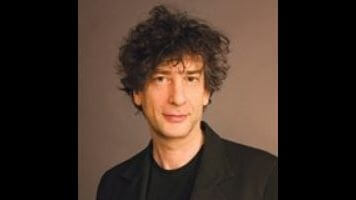Neil Gaiman’s nonfiction collection is grand but nothing new

Deep into The View From The Cheap Seats—a collection of selected nonfiction by Sandman, Coraline, and Stardust author Neil Gaiman—there is an interview with Lou Reed, originally published in Time Out. Gaiman talks to the musician about his book Between Thought And Expression: Selected Lyrics Of Lou Reed. Gaiman posits that Reed’s book simply collects the words, for those who might take stock in such things, with only small notes that act in a “teasing” manner to keep the reader moving forward. Reed also says there is an arc, a narrative of sorts, revealed by the themes of the lyrics when viewed as a whole.
It is, by a long shot, the single most fascinating piece of nonfiction in Gaiman’s collection, in many ways key to understanding what he is trying to do with the book. Gaiman says when most people ask about his influences, they expect him to talk about other writers. And he does, mostly. But he also tries to discuss people from other realms, like Reed, who have had even greater impact on the author’s narrative style. Similarly, The View From The Cheap Seats focuses on writers—mostly—but Gaiman also takes time to divert into other subject matter.
Late in that interview with Reed, Gaiman notes the lyricist seems to take more of a stand on certain issues in his book’s later offerings. Reed explains that he felt he had the right at that point in his career. Late in Cheap Seats, readers see Gaiman tackling topics like Syrian refugees in “So Many Ways To Die In Syria Now.” It stands out because of its stark contrast to the rest of the collection. It’s not what we’re used to seeing from Gaiman. But coming at the tail end of roughly 500 pages, maybe Gaiman felt like he had earned the right.
Gaiman also offers transcripts of awards show speeches and introductions he wrote to books by fellow authors. He offers great insight into Douglas Adams, Harlan Ellison, H.G. Wells, Jack Kirby, and Will Eisner. He surprises with essays like one about his wife, rock star Amanda Palmer, offering a personal view of someone many only get to see as a stage performer.
The collected nature of the book works both for and against Gaiman. For those interested in the mechanics of writing, much can be gleaned from his takes on other writers. And the insight into the writer’s mind when his work is taken collectively is invaluable. For those who are simply fans, the collection also acts as a great jumping-off point to the branching cadre of his influences. And readers—especially Americans—are bound to expand their vocabularies when encountering Gaiman’s unquestionably English vernacular.
The View From The Cheap Seats is a book best taken piecemeal. When taken as a collective, some trends that hurt it emerge. The essays—especially the transcripts of speeches—retread some of the same thematic territory, making it feel repetitive and long. And for those not as invested in the craft of writing, the redundancies, especially early in the collection, have the ability to make Cheap Seats feel a little boring, if only temporarily so.
The biggest thing working against it, though, is that unlike the early 1990s, when Reed’s book was released, the internet is now a way of life. Reed’s interview itself might be worth the price of admission if it was not so readily available online—most prominently on Gaiman’s own Harper Collins-crafted webpage. Many of the other essays are equally easy to track down, having been previously published, begging the question of what the book has to offer that was not available in the originals.
Gaiman is an insightful essayist, and The View From The Cheap Seats is a grand collection of his nonfiction works. But Gaiman’s brief notes in 2016 might not be the same sufficient “teaser” of what lies ahead as Reed’s were.